“And I shall shed my light over dark evil, for the dark things cannot stand the light… The light of The Green Lantern!” Your Major Spoilers Retro Review of All-American Comics #16 awaits!
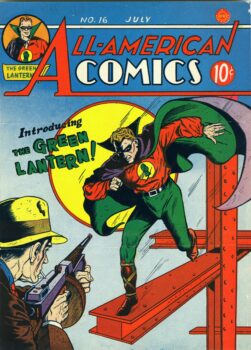 ALL-AMERICAN COMICS #16
ALL-AMERICAN COMICS #16
Writer: Bill Finger
Penciler: Mart Dellon (Martin Nodell)
Inker: Mart Dellon (Martin Nodell)
Colorist: Uncredited
Letterer: Martin Nodell
Editor: M.C, Gaines
Publisher: All-American Comics Inc. (DC Comics)
Cover Price: 10 Cents
Current Near-Mint Pricing:
Release Date: May 17, 1940
Previously in All-American Comics: All-American Comics was launched in 1939 as a humorous anthology, featuring the exploits of Scribbly (a strip which debuted The Red Tornado as one of the earliest female superheroes just a few months after this issue) and flying ace Hop Harrigan. For the first fifteen issues, All-American was officially released by its namesake publisher, but starting with this very issue, All-American and National Comics started being published under the DC banner. (All-American would officially be purchased by National in 1944, finally completing the assembly of DC.) In addition, this issue serves as another milestone, the first real, full bore superhero strip in the book probably best known for hosting Mutt & Jeff. A lot can be gleaned from AA’s decision to not only give the fledgling superhero the lead slot, but the COVER of the book!
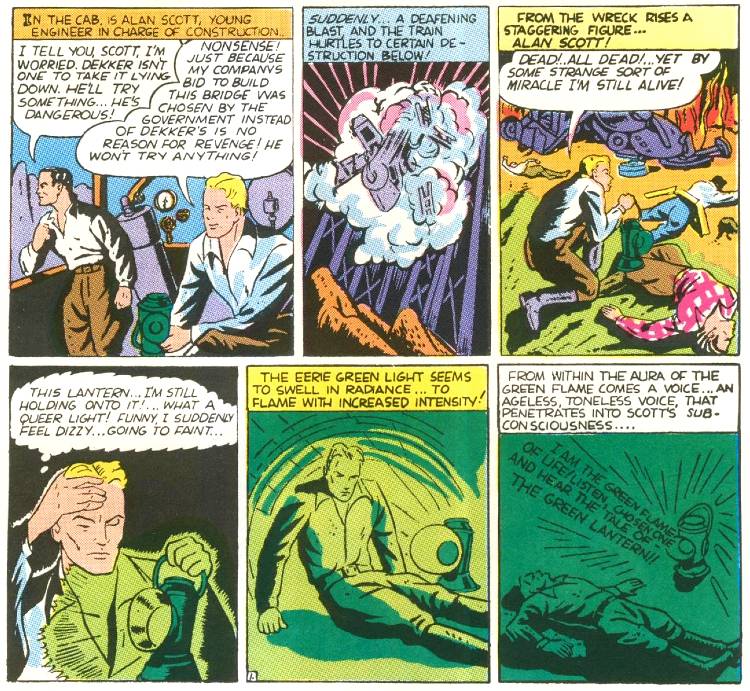
Young engineer Alan Scott has been tasked with a test crossing of a new bridge that he has designed, a crossing in a locomotive that has a strange glowing lantern in the cab. When the bridge collapses and the train is destroyed, Alan finds that he is the sole survivor, only for that strange lamp to begin speaking to him… speaking directly into his mind!

The lamp tells him of a prophecy wherein it will burn green three times, once to bring death, once to bring life, and the third (this time), to bring power! But, it warns him, this power comes with a responsibility to battle evil, using its light to erase darkness, starting with a rival builder, a man named Dekker who lost his bid for the project to Alan’s own firm. In order to use its power, though, the lantern recommends that he carve a ring from its magical metal!
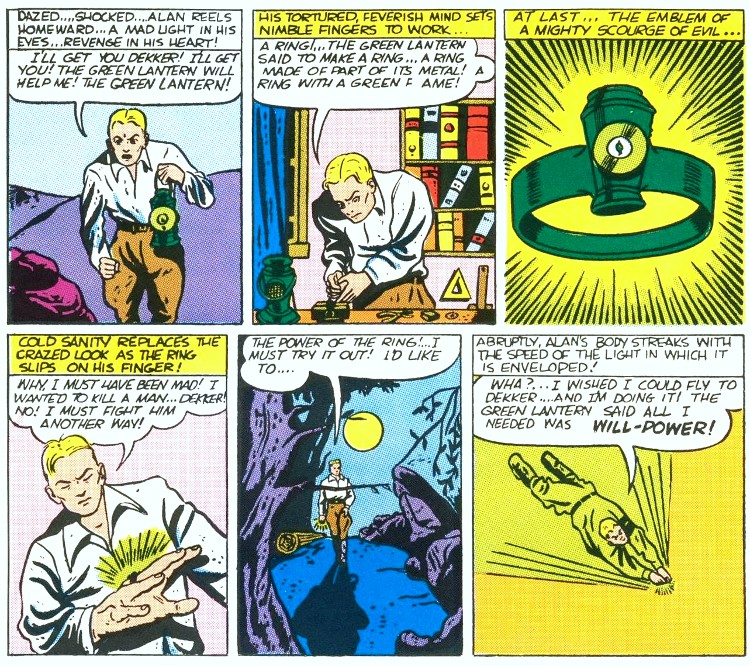
Later stories would add additional barnacles to this tale, eventually retconning that Alan’s lantern is a relic known as the Starheart, related to the Guardians of the Universe, but their debut, and that of his successor, is still 20 years away. This story instead references the story of Aladdin and his lamp, which brings up one of the long-running legends of this Golden Age Green Lantern. Writer Bill Finger, of Batman notoriety, always said that he wanted to name the character Alan Ladd but was overruled by an editor. Green Lantern creator Mart Nodell, however, says he clearly remembers choosing the first and last name from the phone book, which is believed to be true. Either way, it didn’t stop later stories from making “Ladd” Alan’s middle name. In an interesting twist, Alan crafts the ring but doesn’t bother with a mask or costume before setting out to wreak his vengeance on the murderous Dekker.
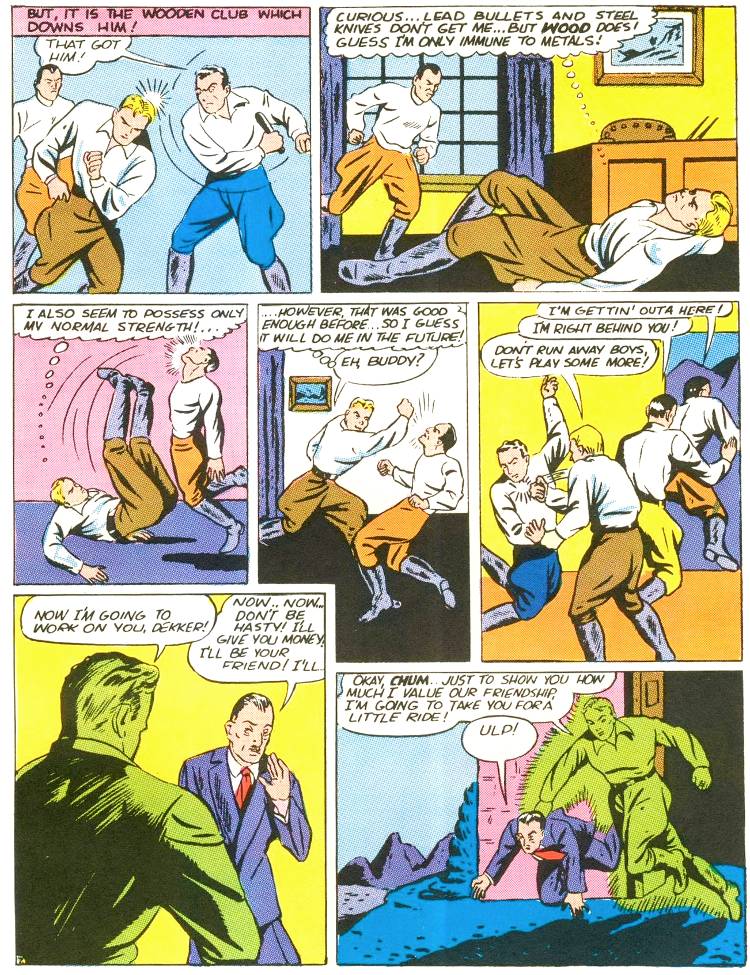
Alan flies, passes through walls, and glows with a green light as he leaps into action, but the story is also quick to say that he’s “only immune to metals,” making the bullets and knives useless against his power. The wooden club, however, is quite effective in knocking him down a peg. There are no energy constructs or beams in this story, either, only Alan’s enhanced might, intangibility, and bulletproof force field. Once the thugs are dealt with, Alan grabs Dekker and puts the fear of green ghosts in him to get a confession…
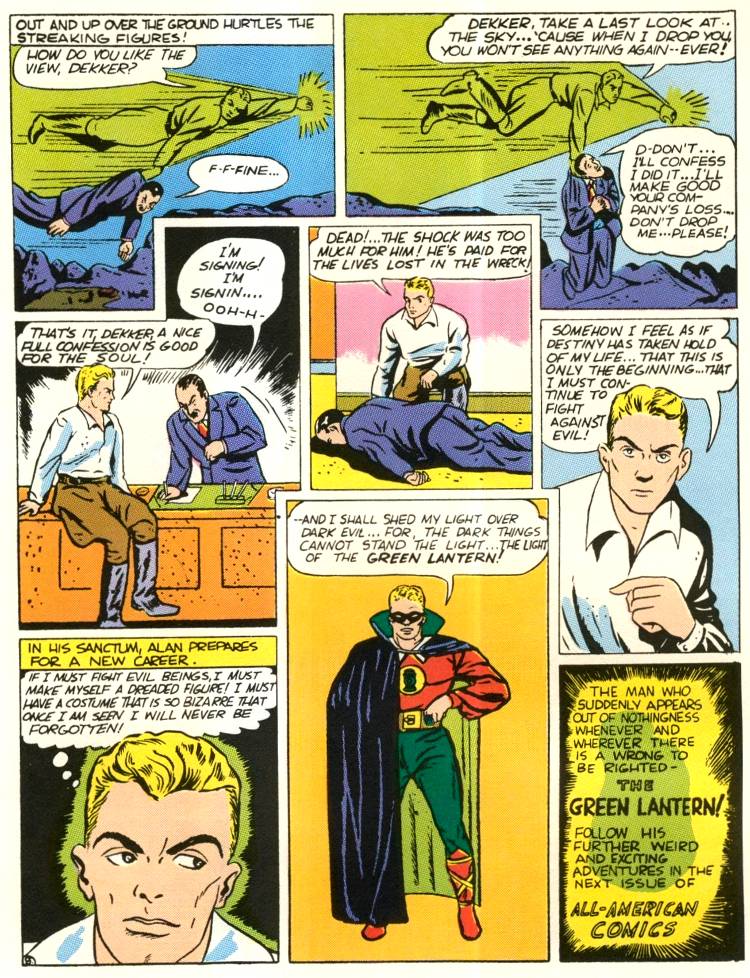
…only for the villain to drop dead. Green Lantern’s garish costume makes its first appearance in the second-to-last panel, but it looks as though his cloak is meant to be black here. Eventually, both it and his mask would become a bright, almost wine-colored purple, an odd counterpart to the mixed greens, red, and yellow of his battle gear. All-American Comics #16 also features a slightly decreased number of humor strips, including Scribby, Mutt & Jeff, and the Reg’lar Fellers, as well as the puzzling Red, White, and Blue team, but Green Lantern’s debut is a short-and-sweet, well-crafted adventure earning 3.5 out of 5 stars overall. Future issues would give us The Atom, Doctor Mid-Nite, the aforementioned Red Tornado, and more as superheroes took over the comic book industry, but would become a western comic in 1948. After that, it switched to a war comic in 1952, restarting its numbering and finally succumbing to cancellation in 1966, five years after a new Green Lantern had helped to launch the Silver Age of Comics.
Dear Spoilerite,
At Major Spoilers, we strive to create original content that you find interesting and entertaining. Producing, writing, recording, editing, and researching requires significant resources. We pay writers, podcast hosts, and other staff members who work tirelessly to provide you with insights into the comic book, gaming, and pop culture industries. Help us keep MajorSpoilers.com strong. Become a Patron (and our superhero) today.
ALL-AMERICAN COMICS #16
The oath, the lantern, the ring and much more debut here, but Alan Scott isn't what he would be come, nor are his powers, but Nodell and Finger build a tightly-plotted, well-written first chapter.
-
Writing7
-
Art7
-
Coloring7



2 Comments
“the puzzling Red, White, and Blue team?” What puzzled you about that feature?
Well, for starters, who in the hell names their child Blooey?
The puzzling thing about them is their SEVEN-YEAR run in the pages of All-American, especially given their relatively pedestrian adventures, which led Alex Ross and Mark Waid to homage them in the page of Kingdom Come. It’s a lot for fellas who didn’t even get an entry in Who’s Who…